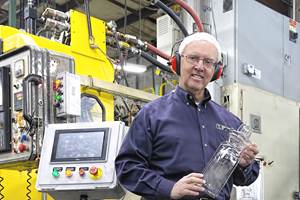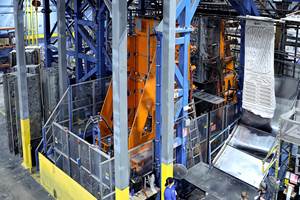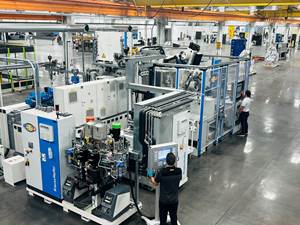During the Coronavirus pandemic, the mold manufacturing industry stepped up, answered the call, and assisted with ramping up PPE production in record lead times with utmost quality. Technology played a part, of course, but it is the people who get the job done. This time of crisis demanded a creative approach to motivating and training both seasoned and next-generation employees to stay safe and current with technology, processes, culture, and customer service.
We see some effects of the virus within our industry, but we won't know the true impact until much later. While the pandemic exposed areas of weakness for many organizations, it's also revealing opportunities to eliminate what isn't producing value and reasons to reinvent the future of molding and mold manufacturing.
Mold manufacturing businesses need to adapt, and this requires a dramatic shift in employee training before the next disruptor comes along.
One such area that the virus outbreak changed has been employee learning and development. Before COVID-19, the workforce development conversation centered around 2030, which was labeled as the tipping point when the last baby boomer turned 65, presenting the industry with a critical workforce challenge. However, those 10 years just became 10 months to train the next generation mold manufacturing workforce because of the virus. Shops had (and still do) to reconsider traditional training techniques and change to some form of virtual training, which does not exist.
Moldmaking vs. Mold Manufacturing
The first step to determine your new training methodology is defining the type of business model you want to apply moving forward: moldmaking vs. mold manufacturing.
The moldmaking process is individually driven (a moldmaker controls and distributes the data/information). The individual chooses machining methods and timing, creates the process, and cost variations could arise in the build process among moldmakers. A mold manufacturing process is team process-driven (engineering controls and distributes the data/information). The team plans machining methods (ERP systems), yielding little or no variations in the build process (scheduling) and predictable margins due to limited variations and unattended machining.
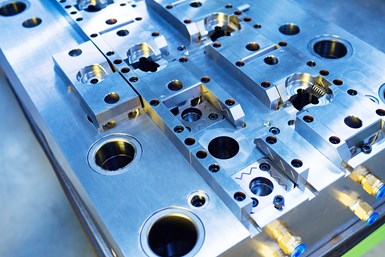
Deciding between a a moldmaking and a mold manufacturing business model is the first step in determining the proper training methodology.
Once the business model is in place, the shop needs to understand its customers and their requirements, which helps define the future mold builder and the required employee training moving forward for both seasoned and next-generation employees.
Mold Designer vs. Mold Engineer
The industry's future mold builder will be engineering injection molds instead of designing injection molds. Engineering, by definition, is the application of mathematics, as well as scientific, economic, social, and practical knowledge to invent, innovate, design, build, maintain, research, and improve structures, machines, tools, systems, components, materials, processes, solutions, and organizations. By definition, design is the intentional creation of a plan or specification for constructing an object or system to implement an activity or process.
For example, engineering an injection mold requires measurable outputs through mathematics and science. Outputs include balancing runner systems (runner design), mold temperature control (GPM and temperature sensors), conformal cooling (estimated cycle time and part quality targets), and calculations for optimized venting (pressure sensors).
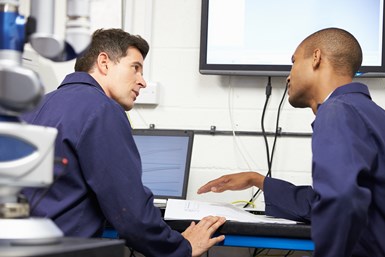
The future of moldmaking is engineering injection molds instead of designing injection molds.
Engineered molds with digital outputs will be the norm, and the mold supplier committed to engineering molds will be the successful mold builder of the future.
Cross-Training Fundamentals
COVID-19 rapidly accelerated this transformation from mold designing to mold engineering. Along with that change came an immediate focus on cross-training—between seasoned and next-generation mold builders and across departments, processes, and specialties.
Here are seven essential skills and knowledge areas to incorporate into a cross-training program for future mold builders:
- Reverse engineering. Take older molds and mold components and accurately measure and create as-built 3D models and prints.
- Virtual mold analysis. Digitally create a molding process with measurable targets before engineering the injection mold; establish measurable cycle times (fill, pack, cooling, pressures); determine warp, venting, part sizes, and steel safe areas; use pressure and temperature sensors and other scientific molding information, and gain end-of-arm tooling and robotic part removal knowledge.
- Mold engineering capabilities. Output 3D mold models for virtual analysis and fully detailed/toleranced drawings (.dwg output) and possess a detailed mold assembly manual with preventative maintenance (PM) recommendations.
- Hot runner system knowledge. Understand fixed tip, valve gate, hot edge gates, and system balancing.
- Manufacturing/measurement of interchangeable mold components. Manufacture and guarantee interchangeable mold components; confirm/certify critical steel measurements; possess CMM and laser scanning capabilities.
- Experience building high cavitation, injection molds. Possess pilot mold capabilities for data gathering (using mold analysis) and scientific molding experience (pressure, temperature sensors).
- Injection mold testing capabilities. Have experience with First Out of Tool (FOT), Factory Acceptance Tests (FAT), Site Acceptance Testing (SAT), and Design of Experiments (DOE) validations, process development, and turnkey capabilities.
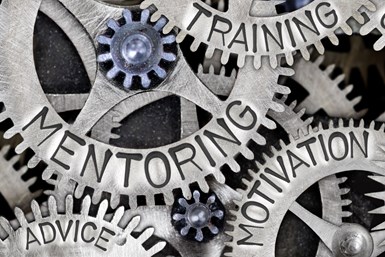
Training employees for the future requires consideration of each person’s characteristics.
The method leadership uses to train employees with these skills and knowledge requirements is now mission-critical to the business as it moves forward. Any selected method must consider the characteristics or traits of each trainee. Let's break down some of the characteristics to consider, so a business can continually train for the future of mold building.
The trainee of the future should:
- Possess positive personality traits, such as curiosity, ambition, self-starter, interest in how things work, motivation to get better, strong work ethic, soft skills, and an optimistic attitude.
- Have an engineering mind that enables them to work with true engineering principles and problem-solving methods; stay current with advanced mold building technology, apply tooling 4.0 (sensors) to measure mold performance, and use data to monitor production performance.
- Embrace flexibility when it comes to disruption. For example, easily transferring to virtual or remote communication or training methods and using new communication methods.
Training the next generation will automatically include webinars on specific topics (i.e., additive manufacturing, machining, mold components, hot runners, software, etc.), virtual classroom time developed by universities, technical schools, trade associations, and suppliers taking place during working hours or at home, and structured, measurable training objectives for each employee.
The Virtual Training Classroom
The evolution of training will include virtual training, so it is important to conduct it effectively and properly. Here is a list of virtual training components to consider as you take your next-generation employees into the future of mold manufacturing:
- Application projects that deliver measurable comprehension on the part of the trainee.
- Online instructors available to answer questions from the trainee or review the trainee's application project.
- Accessibility and usage by everyone and not just a geographical location.
- Solid use of the Internet to research assigned projects.
- Enhanced communication and technical skills with targeted/specific projects related to mold manufacturing.
- Use of the business' software system—both CAD and CAM—for industry-standard projects and not the customer's data, Microsoft Excel for formulas and calculations, and Microsoft Word and Microsoft PowerPoint for communication skills).
Change Is Good
The notion that the post-COVID world will be a significantly different "new normal" relative to the pre-COVID world has become cliché, but that doesn't make it any less true. Economies worldwide are now keenly aware of the fragility of their supply chains and other business fundamentals and are revisiting supply chain strategies. Many were forced to restructure their business models for months, ingraining those changes into day-to-day operations.
Companies discovered that they could gain or enhance competitive advantages by embracing some of the tools they initially adopted out of necessity. All of this means the post-COVID workplace will require skills and capabilities that may have been marginally important or even nonexistent in the pre-COVID world. Mold manufacturing businesses will need to adapt, and this requires a dramatic shift in employee training before the next disruptor comes along.
ABOUT THE AUTHOR: Don Smith is North American senior tooling manager for Scholle IPN Packaging Inc., Northlake, Ill. In this role, he provides direction to the injection molding tooling team with a specific focus on preventative and timely corrective maintenance, injection molds, tooling and tooling repair. Smith is responsible for project leadership on new product development collaboration with facilities in North America. He also actively participates in capital planning and implementation and new process development scale-up efforts. Contact: 708-409-4435; don.smith@scholleipn.com; scholleipn.com
Related Content
Plastics Processors Who Hire ‘Second-Chance’ Workers Do Well by Doing Good
Two blow molders with long-standing programs of hiring formerly incarcerated low-level offenders have helped these individuals re-enter their communities and have benefited from an additional resource during chronic labor shortages.
Read MoreWittmann Delivers Injection Molding Workcell to Alabama Community College
Southern Union State Community College (SUSCC) installed the Wittmann SmartPower120 molding machine with an integrated robot, temperature control unit (TCU) and dryer to support its plastics education program.
Read MoreTeaching Kids About the ‘Magic’ of Manufacturing
Making something out of (almost) nothing is an ‘eye opener’ for youngsters in their first exposure to plastics processing.
Read MoreKraussMaffei and NIAR Propel Injection Molded Thermoplastic Composites
The maker of plastics processing equipment has placed a machine and an injection molding expert in NIAR’s ATLAS lab in Wichita, Kansas, to help molding, composites and aerospace take off.
Read MoreRead Next
People 4.0 – How to Get Buy-In from Your Staff for Industry 4.0 Systems
Implementing a production monitoring system as the foundation of a ‘smart factory’ is about integrating people with new technology as much as it is about integrating machines and computers. Here are tips from a company that has gone through the process.
Read MoreLead the Conversation, Change the Conversation
Coverage of single-use plastics can be both misleading and demoralizing. Here are 10 tips for changing the perception of the plastics industry at your company and in your community.
Read More






















